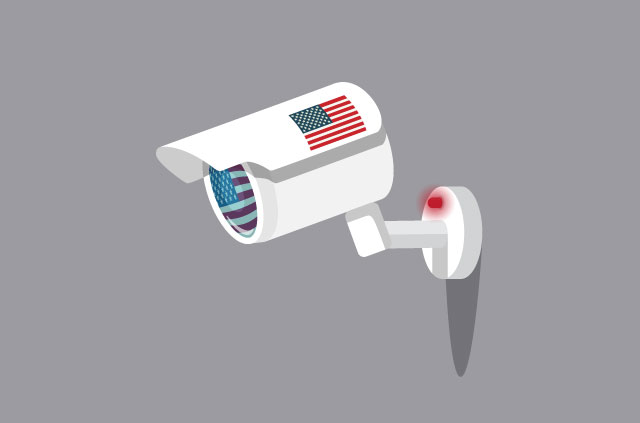 Five years on from the revelations that the U.S. National Security Agency (NSA) collects personal data on every American—and many more people worldwide—the storm has passed. But, the NSA continues to monitor every American and the citizens of many allied countries, with the backing of the U.S. government and large portions of Congress. And it’s not only the NSA—its counterparts at the CIA are also spying on and hacking targets of interest. It is important to learn about the methods the NSA uses to spy on citizens. Once you understand how your liberties are violated, you can start defending your data and reclaim your privacy.
Five years on from the revelations that the U.S. National Security Agency (NSA) collects personal data on every American—and many more people worldwide—the storm has passed. But, the NSA continues to monitor every American and the citizens of many allied countries, with the backing of the U.S. government and large portions of Congress. And it’s not only the NSA—its counterparts at the CIA are also spying on and hacking targets of interest. It is important to learn about the methods the NSA uses to spy on citizens. Once you understand how your liberties are violated, you can start defending your data and reclaim your privacy.
Let’s take a look at eight methods the NSA is using to spy on you right now, according to documents leaked by Edward Snowden and further investigation by the press.
How the NSA spies on you in America
1. It can access your phone records
In 2017, the NSA acquired data from over 534 million phone calls and text messages. Unbelievably, this tally is over triple the amount collected in 2015, when the USA Freedom Act supposedly limited NSA access to data from communication companies.
2. Your favorite internet services pass your data to the NSA
Facebook, Google, Apple, and six other leading online services have all gone on record as having given their customers’ data to the NSA, as legally required by the “PRISM” program. Data shared includes emails, messages, and documents.
3. The NSA can hack your devices
The NSA’s hacking unit, Tailored Access Operations, has developed a whole range of hacking exploits. These enable the NSA to break into consumer electronics devices and IT systems as it sees fit. When the NSA finds a security hole in a popular consumer device, it does not, as previously intended, fix the security hole, but instead exploits it. That leaves all our devices vulnerable to hackers.
4. All your security devices are exploitable thanks to the NSA
The NSA has also made the job of hacking security devices easier for itself, by coercing many manufacturers into building vulnerabilities into products such as networking switches, firewalls, and encryption protocols. These vulnerabilities are known to the NSA, which can exploit them at any time. The NSA also intercepts shipments of computers and phones and plants backdoors in them.
5. The NSA can track you wherever you are
When you move around your town, cell phone towers can calculate your exact position. Though the NSA says it no longer collects this bulk data itself, cell phone providers are still required to do so, and they in turn must surrender those records to the NSA when ordered by a court. You don’t even have to be the subject of an inquiry yourself. The data of millions can be handed over, without notice, because you had even the most tangential connection to a person under surveillance.
How the NSA spies on you overseas
6. The NSA has tapped internet lines worldwide
The internet connects different continents via undersea fiber optic cables that carry truly massive amounts of data. In some places, the NSA has deals with local intelligence agencies to tap into these cables; in others, it does so on its own. The NSA even uses submarines to attach snooping bugs to wires deep beneath in the ocean.
7. The NSA hacks foreign companies
In Brazil, Germany and other countries, the NSA has broken into the internal networks of major telecommunications providers, intercepting the data they gather and weakening the security of their systems. It collects every email and phone call it can.
8. The NSA knows exactly what you own and buy
The NSA has access, through agreements and hacking, to major credit card networks, payment gateways, and wire transfer facilities. This allows it to follow every cent of your money, where it comes from, and what you are spending it on.
Protect yourself from government surveillance
While the NSA’s reach extends across the globe, there is still a lot you can do to safeguard your internet privacy. Check out this list of top privacy tips and always be conscious of what you’re sharing, with whom you’re sharing, and how you share it.
No comments:
Post a Comment